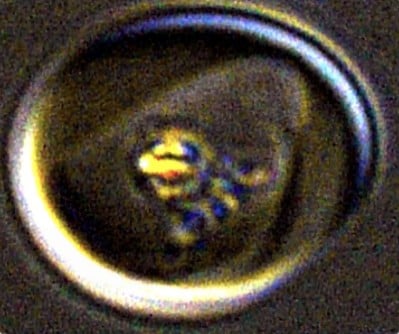UPDATE: New research has revealed the reason behind the chaotic spinning of iron crystals within the deadly malaria-causing parasite, Plasmodium falciparum. This groundbreaking discovery could pave the way for new malaria treatments and innovative nanotechnology applications.
For decades, scientists have been mystified by the behavior of these microscopic iron crystals, which are present in every cell of the parasite. Now, a team led by Paul Sigala, PhD, at the University of Utah, has uncovered that these crystals are propelled by the breakdown of hydrogen peroxide—an explosive reaction similar to that used in rocket fuel.
The findings, published in PNAS, indicate that as long as the parasite is alive, these crystals spin and jolt wildly, creating a unique propulsion mechanism never before observed in biological systems. This motion is crucial for the parasite’s survival, potentially allowing it to manage toxic peroxide levels and store iron efficiently.
The implications of this discovery are enormous. According to Erica Hastings, PhD, a postdoctoral fellow in the same research team, “This hydrogen peroxide decomposition has been used to power large-scale rockets, but it has never been observed in biological systems.” This revelation opens new doors for drug development targeting the parasite’s unique mechanisms, significantly reducing the risk of dangerous side effects in humans.
Researchers found that hydrogen peroxide, a byproduct of the parasite’s metabolism, triggers the spinning of iron crystals. When grown in low-oxygen environments, the crystals’ motion slowed by nearly 50%, underscoring their dependence on this toxic compound for energy. The team suspects that the frenetic motion may help the parasite eliminate excess hydrogen peroxide, which could otherwise damage its cells.
The potential for innovation extends beyond malaria treatment. The study suggests that the self-propelling iron crystals could inspire the design of advanced nanorobots for various industrial and medical applications. Sigala noted, “Nano-engineered self-propelling particles can be used for a variety of industrial and drug delivery applications.”
As the global health community seeks effective methods to combat malaria, which affects millions annually, this research could lead to the development of more effective antimalarial drugs. By targeting the unique mechanisms of the parasite, researchers aim to create therapies that are less likely to harm human cells.
The critical takeaway from this study is that the crystalline motion of heme within the malaria parasite offers a fresh approach to tackling the disease. With potential funding and support from the National Institutes of Health, the research team is poised to explore these avenues further.
As the world continues to grapple with malaria, a disease that claims hundreds of thousands of lives each year, these findings bring hope for new treatments. The unique propulsion mechanism of these crystals could be the key to unlocking better strategies for combating one of humanity’s deadliest foes.
Stay tuned for more updates on this developing story, as researchers delve deeper into the implications of their findings and what it could mean for future malaria therapies and beyond.







